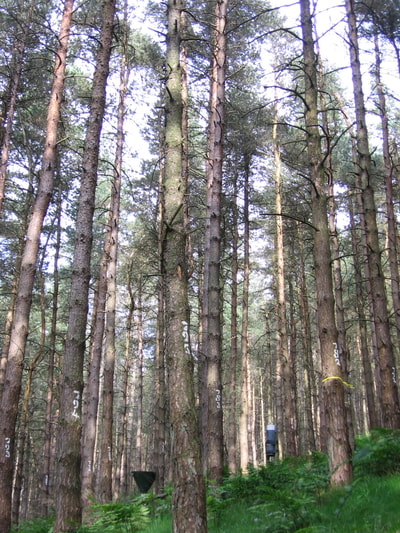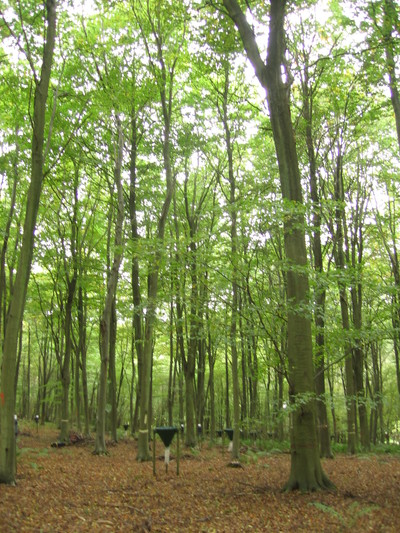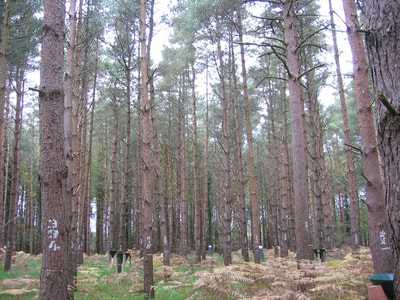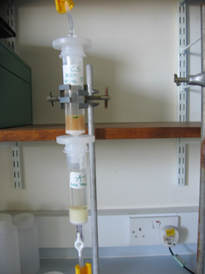RESEARCH
forest canopies and n cycling
funding sources |
Following the results I published at the Deepsyke site in Scotland, I was intrigued to further explore what happens during the interaction between tree canopies and atmospheric nitrogen under ambient N deposition conditions. To this aim, during my postodoc at the University of Edinburgh, I sought to consider established plots in the UK where monitoring of atmospheric deposition has been carried out since the 90’s by colleagues at Forest Research (Elena Vanguelova and Sue Benham). Monitoring of the main N chemical species (i.e., NH4, NO3, dissolved organic N) in rainfall (RF) and throughfall (TF) in forests has shown that N deposition is substantially altered through its path into the canopy. Specifically, N fluxes are lower in TF than RF at the low N deposition sites, while the opposite is frequently observed at the high N deposition sites. These results are attributed to canopy retention and contribution of dry N deposition washed off the canopy during a rainy event, respectively. However, how do these changes take place? is there any process involved or are tree canopies just acting as passive ‘filter’? In order to better elucidate the transformation occurring when atmospheric N interacts with tree canopies we considered four forests in the UK (two Scots pine and two common beech forests) at contrasting level of N deposition. We applied for the first time the quadruple isotope approach (δ15N in NH4 and NO3 and δ18O and δ17O in nitrate) in both RF and TF water collected through June to November 2011. We used Δ17O in TF NO3 to quantify the fraction of atmospherically-derived NO3 (Δ17Oatm > 0 per mille (‰) due to an enrichment in 17O during photochemical oxidization of nitrogen oxides (NOx) by O3) and microbiologically-derived NO3 − (Δ17O from nitrification = 0‰). Thanks to the Δ17O we were able to prove that between 20 and 60 % of the NO3 collected in TF water at high N deposition sites derive from nitrification occurring in the canopies. This finding suggested that microbes living in the phyllosphere are responsible for transforming atmospheric N before it reaches the soil. The next step then was to go beyond the greenness of leaves and look for those microbes responsible of transforming atmospheric N! That was the mission of NITRIPHYLL project, funded by European Commission within Marie Skodowska Curie fellowship. The overall goal of NITRIPHYLL was to prove that the microbial communities harbored in forest canopies carry out processes hitherto unrecognized for their significance, i.e., nitrification in the canopy, thereby helping cycling N before litter is returned to the soil. NITRIPHYLL for the first time merged two separate research avenues, i.e., the investigation of N transformation by forest canopies (through stable isotopes) with the study of abundance and diversity of microbes involved in nutrient cycling (through qPCR and NGS). Learn more about NITRIPHYLL project by following this link! Further reading
About Δ17O:
Michalski et al. 2003. Geophysical Research Letters, 30. 1870 Michalski et al. 2011. Handbook of Environmental Isotope Geochemistry | ||






